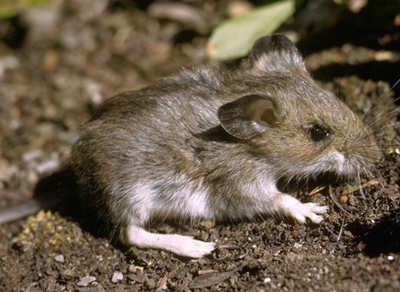
Popular images of Ice Age California tend to feature enormous, extinct mammals like mammoths and saber-toothed cats. By contrast, new research published in Nature examines populations of small mammals that survived through the end of the Ice Age and how they were affected by the climate change.
The research team of Jessica Blois (formerly at Stanford, now at University of Wisconsin, Madison), Elizabeth Hadly (formerly of UCMP, now at Stanford) and Jenny McGuire (UCMP) studied fossilized woodrat nests collected from Samwell Cave in Northern California. Woodrats carry scat and regurgitated pellets produced by carnivores back to their nests. These collections are filled with undigested small mammal bones, making fossilized woodrat nests treasure troves for paleontologists.
Comparing fossil data to modern small mammal populations in the same region revealed a big decrease in diversity during a period of global warming at the end of the Pleistocene Epoch. There was a decrease in both species richness (number of different species) and evenness (relative dominance of species within a community). A few species disappeared from the area entirely. Some species remain in the area but as a much smaller proportion of the overall small mammal community. And the main species to increase in relative abundance was the deer mouse — an animal that can tolerate a wide variety of habitats and climates.
Research of historic periods of global warming improves our understanding of how modern, man-made global warming will affect life on Earth. Read more about this research: